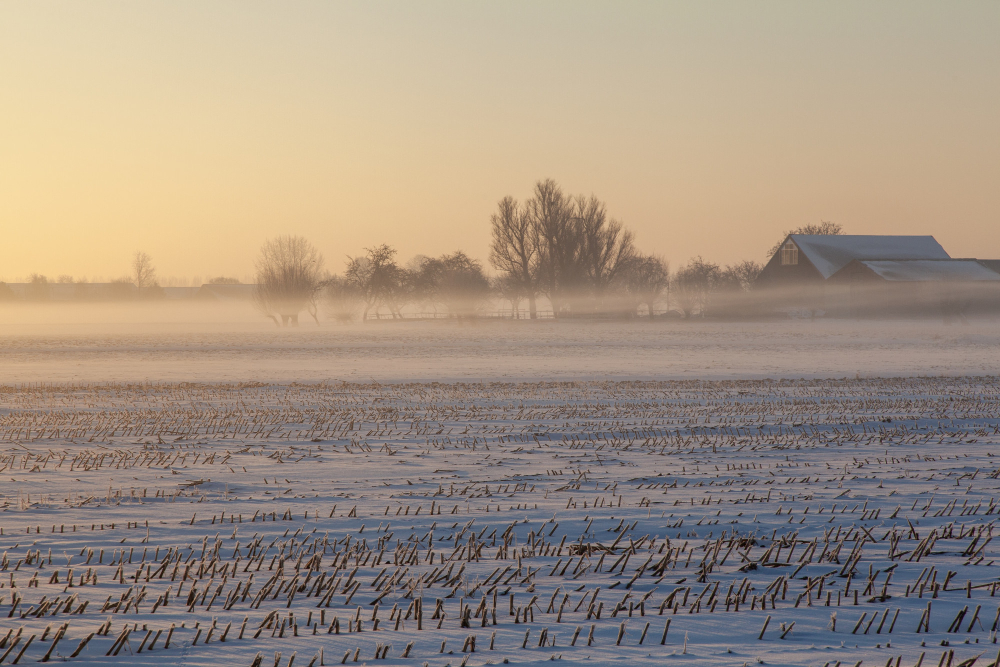Facts About Cold Waves in Canada and How to Prepare for Them
Every Canadian knows that winter can be unpredictable, but a cold wave brings an entirely different level of challenge. When temperatures plunge well below seasonal averages for days or even weeks, daily life can grind to a halt. Homes, roads, and power systems all come under stress — and without proper preparation, even short cold snaps can quickly become dangerous.
This article explains what a cold wave is, what causes it, and how you can prepare for its impact. You’ll also find practical tips and power backup solutions to help your household stay safe and warm when the mercury drops.
What Is a Cold Wave?
A cold wave is a stretch of unusually cold weather over a large region, marked by a sharp drop in air temperatures (daytime high, nighttime low, or daily average) that lasts for at least two consecutive days. It’s more than just a cold morning—it’s a sustained pattern of cold that pushes conditions well outside normal for the season.
What Causes a Cold Wave?
If you’ve ever wondered what causes a cold wave, the answer lies in the movement of air masses. Cold waves occur when Arctic air pushes southward, replacing warmer air over populated areas.
Other contributing factors include shifts in the jet stream that allow Arctic air to dip unusually far south, snow cover that reflects sunlight and holds cold at the surface, and stretches of clear skies and calm winds that let heat escape rapidly overnight.
These patterns create what meteorologists call cold wave weather, often accompanied by strong winds, freezing rain, or blowing snow — a combination that can disrupt your daily routine.

Notable Cold Wave Events in Canada
Canada has seen several memorable cold waves that highlight just how severe its winters can be. Here are some of the most significant ones:
1936 North American Cold Wave
In January 1936, an intense Arctic outbreak gripped the Canadian Prairies. Temperatures plunged to about –51 °C in Saskatchewan and –52 °C in Manitoba, while Fort Resolution, Northwest Territories, recorded –51.7 °C. The extreme chill disrupted transportation and froze fuel supplies across the region.
1947 Canadian Cold Wave
The winter of 1946–47 remains one of the harshest in Canadian history. On February 3, Snag, Yukon, recorded –63 °C (–81.4 °F), the lowest temperature ever measured in Canada and North America outside of Greenland. The persistent cold stretched across northern and western regions for weeks.
1994 Canadian Cold Wave
In January 1994, much of Eastern Canada faced a deep freeze. Temperatures fell below –40 °C in parts of Ontario and Quebec, and Toronto experienced one of its coldest days on record at –25 °C. The event caused widespread power failures, water main breaks, and serious travel disruptions.
2025 Canadian Cold Wave
In January 2025, a powerful Arctic front swept across the Prairies. Saskatchewan saw lows near –36 °C, with wind chills close to –50 °C. The extreme cold led to school closures, transportation delays, and extended extreme cold warnings across Manitoba and Alberta.
How Does a Cold Wave Affect Canada?
The impact of cold wave natural disaster extends far beyond shivering outdoors. They can affect nearly every part of daily life:
Health & medical risks: In extreme cold, wind chill strips body heat fast. That makes frostbite and hypothermia real dangers for vulnerable people (seniors, infants, those with chronic illnesses, outdoor workers). It also puts extra strain on hearts and lungs, worsening cardiovascular and respiratory conditions and raising risks of heart attacks or strokes.
Infrastructure strain: Heating systems, plumbing, and electrical grids are under stress. Pipes can freeze or burst. Furnaces might fail. With high heating demand, power grids risk overloading and causing outages.
Transportation & mobility issues: Vehicles can stall in frigid conditions. Roads, bridges, and sidewalks get icy. Public transit — buses, trains, flights — often face delays or cancellations during sustained cold.
Higher energy demand: With almost everyone trying to heat their homes more, electricity and fuel use rises sharply. If demand exceeds supply, blackouts or brownouts may follow.
Impact on agriculture: Cold waves can severely harm crops and livestock. Frosts or sudden deep freezes may damage or kill plants not yet resilient. Animals might suffer due to inadequate shelter or heat, and water sources can freeze, limiting access.

How to Prepare for a Cold Wave?
Preparation is the best defense against severe cold. Here’s how to keep your home and family safe:
Pay Attention to Weather Alerts
Stay alert for any “special weather statement” issued by Environment and Climate Change Canada. These alerts give you time to get ready before the cold sets in. Keep checking forecasts on trusted channels or apps, and make sure everyone in your household knows what to do when the alert is issued.
Prepare an Emergency Kit
A well-prepared emergency kit can make a big difference during a power outage or when roads are closed. Pack enough non-perishable food, bottled water, blankets, flashlights, extra batteries, and a first-aid kit for at least 72 hours. Don’t forget necessary medications and warm clothing.
Set Up Reliable Backup Power
During a cold wave, outages happen when heating loads spike and the grid can’t keep up. A reliable backup system means your home stays warm and your essentials stay on even when the lights go off. Take the EcoFlow DELTA Pro Portable Power Station—it can expand up to 25 kWh and deliver 3,600 to 7,200 W AC power, so heaters, lights, and crucial devices keep working through long freezes.
EcoFlow DELTA Pro Portable Power Station
Dress Smart
The best way to dress warm is by layering clothing. Start with a thermal base layer, add an insulating middle layer like fleece, and finish with a windproof and water-resistant jacket. Mittens are usually warmer than gloves, and a hat helps reduce heat loss from your head. When heading outdoors, cover your mouth and nose to protect your lungs from icy air.
Keep Your Home Warm
Seal gaps around windows and doors with weather stripping or caulking to stop drafts. Insulate exposed pipes and let faucets drip slightly to prevent freezing. If your heating system fails, close off unused rooms to conserve heat and gather in one area. Keeping a portable power station on hand can also help you stay comfortable by powering small heaters, lights, or charging devices during unexpected outages.
If you’re new to home backup systems, you can learn more about how they work through guides like Portable Power Station Explained.
Stay Aware of Your Body’s Signals
Prolonged exposure to cold can cause frostbite or hypothermia. Frostbite usually starts with numbness or pale skin on fingers, toes, ears, or the nose. Hypothermia may show through constant shivering, confusion, slow speech, or unusual tiredness. If someone shows signs of hypothermia, move them to a warm place, remove wet clothing, and wrap them in blankets.
Stay Safe on the Road
Before driving, check the weather and road reports. Travel during daylight, let someone know your route, and avoid taking shortcuts on unfamiliar roads. Keep your gas tank at least half full to prevent freezing.
It also helps to carry a small backup power source in your vehicle. A power bank can keep your phone charged for navigation or emergency calls, while a portable power station can handle larger needs like running lights or charging tools.
Conclusion
A cold wave is a prolonged, severe drop in temperature that tests every part of how we live—from heating systems to how safely we move around. When you know the cold wave definition, the signs, respect past examples, and act on smart preparations, you transform uncertainty into confidence. No matter how deep the freeze gets, you and your home can be ready.
FAQs
Which city has the most snow in Canada?
The city that receives the most snow in Canada is Quebec City. On average, it gets over 300 cm (118 inches) of snow annually. This is due to its location near the St. Lawrence River and its climate, which brings heavy snowfalls, especially during the winter months. Other snowy cities include St. John’s in Newfoundland and Sault Ste. Marie in Ontario, but Quebec City consistently tops the list.
What was the worst cold wave in history?
Canada has experienced many severe cold waves, but two events stand out in history. The 1936 North American Cold Wave gripped the Prairies with record-low temperatures and heavy snow, freezing livestock and shutting down transportation networks. Even more extreme was February 3, 1947, when Snag, Yukon recorded –63 °C, the coldest temperature ever measured in Canada and North America. This brutal cold wave froze fuel lines, grounded planes, and tested survival in remote northern communities. These historic cold waves remain powerful reminders of how Arctic air outbreaks can reshape daily life, challenge infrastructure, and push human endurance to its limits.
How long does a cold wave last?
A cold wave usually lasts from two days to more than a week, depending on weather systems and the strength of the Arctic air mass. In some cases, a strong high-pressure ridge traps frigid air over large regions, keeping temperatures dangerously low for extended periods. During prolonged cold waves, heating demand surges, power grids face heavy strain, and icy roads make travel hazardous for drivers. Even a brief cold snap can have serious effects when combined with strong winds that increase wind chill. Staying ready with layered clothing, good insulation, and reliable backup power helps manage these harsh periods safely.